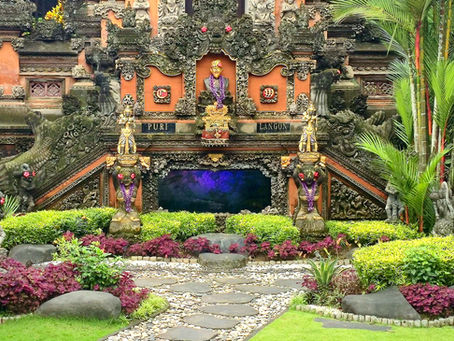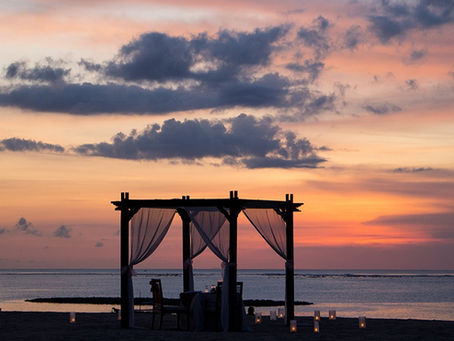top of page

GLOBAL SHANANIGANS

Search


Kanto Lampo Waterfall
Shaped by both chance and design, one of Bali’s most unexpected natural wonders is Kanto Lampo Waterfall. Unlike the island’s ancient cascades that have poured down jungle cliffs for centuries, this waterfall is a relatively recent creation. In the early 2010s, adjustments to a local irrigation system redirected water across a rocky cliffside and over time the flow carved its way over volcanic stone, giving rise to the unique cascade we see today.
Shannon


Ubud Water Palace
Built in honour of its namesake Saraswati, the Hindu goddess of knowledge, music, art, wisdom and learning, Pura Taman Saraswati is a graceful water temple nestled in the heart of downtown Ubud. This sacred site blends spiritual reverence with classical Balinese aesthetics, offering a peaceful retreat just steps away from the town’s busy centre.
Shannon


Tirta Gangga Water Palace
Nestled in the eastern highlands of Bali, in the quiet village of Ababi at the foot of Mount Agung, Tirta Gangga is a royal water palace steeped in beauty and spiritual reverence. Commissioned by the last Raja of Karangasem in 1946, this sacred estate pays homage to Balinese Hindu devotion. Its name, meaning “blessed water from the Ganges,” reflects its role as both a royal retreat and a site for spiritual purification and ceremonial bathing.
Shannon


Lempuyang Temple - Heaven's Gate
Standing proudly at 1175 metres above sea level, on the peak of Mount Lempuyang, this ancient temple complex is among Bali’s oldest and most revered, believed to predate most Hindu temples on the island. Although there is some confusion about the site’s exact age, the establishment of temples here stretches back at least a millennium.
Shannon


Bedogol - The Gatekeepers
Across Bali, Bedogol refers to the guardian statues that flank the entrances of temples and family compounds, the silent watchers carved in stone. Positioned in pairs on either side of a gateway, they serve as spiritual protectors, anchoring the threshold between the ordinary world and sacred ground.
Shannon


Puri Langon Temple
Puri Langon is a privately owned royal compound located in central Ubud. It is the personal residence of Tjokorda Ngurah Suyadnya, better known as Cok Wah, a respected figure in the Ubud royal family. Though it remains a functioning private home, Puri Langon is open to the public free of charge, offering rare access to a lived-in royal space that continues to serve spiritual and cultural functions within the community.
Shannon


Batara Kala - Devourer of Time and Light
Batara Kala, in Balinese mythology, is the monstrous deity of time, destruction and the underworld. He's a god born not from light but from the uncontrolled lust of the supreme god Shiva (Siwa). In one chilling version of his origin, Batara Kala is conceived during a moment of cosmic imbalance, when Shiva’s spilled seed, filled with uncontrollable rage and passion, falls to earth and takes form.
Shannon


Inside the Puputan - Bali's Bloody Resistance
The Dutch first reached Bali in 1597 while scouting new ground for conquest and profit. They left without drawing blood but they didn’t leave without a decision. Bali had been marked. For the next two centuries, the island remained untouched, not because the Dutch had lost interest, but because they were waiting for the moment it would be worth the slaughter. It wasn’t peace. It was a pause before an extermination. When they returned, the rivers would turn red.
Shannon


Uluwatu Temple
Overlooking the vast and turbulent Indian Ocean on Bali’s Bukit Peninsula, Uluwatu Temple (or Pura Luhur Uluwatu) perches 70 metres above the waves, a landmark of both awe and solemnity. Archaeological evidence shows its origins date back to the 9th century, based on an ancient split gateway bearing a chronogram marking 886 .AD, confirming its megalithic roots as one of the island’s oldest sacred sites
Shannon


Bhoma - Bali's Protector and Judge
In the architectural language of Balinese temples, Bhoma statues are not merely decorative but play a protective and symbolic role. Bhoma is derived from the ancient Sanskrit word bhūma, meaning “Earth” and is considered a guardian spirit linked to fertility, the forest and subterranean realms. Usually mounted above temple gates or embedded within sacred water features, these fierce, leaf entwined figures serve as guardians of spiritual boundaries,
Shannon


Ganesh - The Remover of Obstacles
In the moss veiled temples of Bali, Ganesha is far more than a familiar Hindu icon, he is a living force who moves between light and shadow. Though his roots lie in Indian Hinduism, Bali’s Ganesha (also known as Batara Gana) has taken on new dimensions, shaped by animist spirits, local rituals and the Balinese understanding of cosmic balance.
Shannon


Gateway to Bali - The Soul of Tuban
Long before it became a quiet suburb near Kuta, Tuban was a vital coastal hub within the ancient Kingdom of Badung, linking Bali to the wider archipelago through maritime trade. Its name, drawn from the sound of retreating waves, reflects a deeper spiritual rhythm, one that still echoes through Balinese belief in the cycles of life, death and rebirth.
Shannon


Keramas Black Sand Surf Beach
Keramas Beach, located on Bali’s less developed eastern coastline in Gianyar, is known for its striking black volcanic sand and powerful surf breaks. Unlike the bustling beaches of Kuta or Seminyak, Keramas maintains a more secluded atmosphere, drawing a niche crowd of surfers rather than general tourists.
Shannon
bottom of page